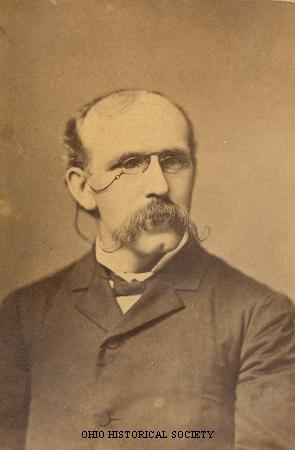Encyclopedia Dubuque
"Encyclopedia Dubuque is the online authority for all things Dubuque, written by the people who know the city best.”
Marshall Cohen—researcher and producer, CNN
Affiliated with the Local History Network of the State Historical Society of Iowa, and the Iowa Museum Association.
KNIGHTS OF LABOR
This entry is being developed.
THE NOBLE AND HOLY ORDER OF THE KNIGHTS OF LABOR. The Knights of Labor, a first important national labor organization in the United States was established in 1869. (1) It served as an umbrella organization for other unions that joined it. Founded by Uriah Stevens, the Knights of Labor was originally a secret organization, but Terence Powderly, elected as grand master workman, ended the group's secrecy and removed the word "noble" from its title after assuming control of the organization in 1879. (2) Membership grew quickly, reaching approximately 700,000 members by 1886. (3)
The Knights of Labor attempted to unite all "producers," anyone who produced a physical product during a workday. While welcoming factory workers and business owners, the group rejected "nonproducers"—people who did not engage in physical labor, such as bankers, lawyers, and academics. The organization even allowed women and AFRICAN AMERICANS to join. The producers sought an eight-hour workday, an end to child labor, better wages, and improved working conditions. Under Powderly's leadership, the organization also provided support for the temperance movement. (4) At its peak, membership in the organization exceeded 700,000. (5)
The Knights of Labor used boycotts and peaceful negotiations. Powderly generally opposed strikes, believing that they led to bloodshed and increased tensions. Other Knights of Labor leaders preferred utilizing strikes. Following the Haymarket Square Riot in Chicago, Illinois, in 1886, the backlash against unionism and dissatisfaction of many members led to the establishment of the American Federation of Labor (AFL) in December 1886. The AFL focused on winning economic benefits for its members through collective bargaining. As a federation, it represented several national craft unions that each retained autonomous operations. The Knights, by contrast, represented both craft and unskilled workers in a single national union. (6) The Knights of Labor declined as an effective organization and Powderly resigned as the organization's head in 1893. (7) In addition to raising issues that were later won for organized labor, one of their most lasting contributions of the Knights of Labor was Labor Day, an event they sponsored. (8)
---
Source:
1. "Knights of Labor," Encyclopedia Britannica. Online: http://www.britannica.com/EBchecked/topic/320386/Knights-of-Labor-KOL
2. Ibid.
3. "Knights of Labor," Ohio History Central. Online: http://www.ohiohistorycentral.org/w/Knights_of_Labor?rec=910
4. Ibid.
5. Scharnau, Ralph. "Workers and Politics--The Knights of Labor in Dubuque, Iowa 1885-1890, Annals of Iowa. Des Moines: State Historical Society of Iowa, Volume 48, Number 7 (Winter of 1987), p. 353
5. "Knights of Labor," Encylopedia Britannica
6. "Knights of Labor," Ohio History Central
7. "Knights of Labor," The Holiday Spot. Online: http://www.theholidayspot.com/laborday/k_of_L.htm


